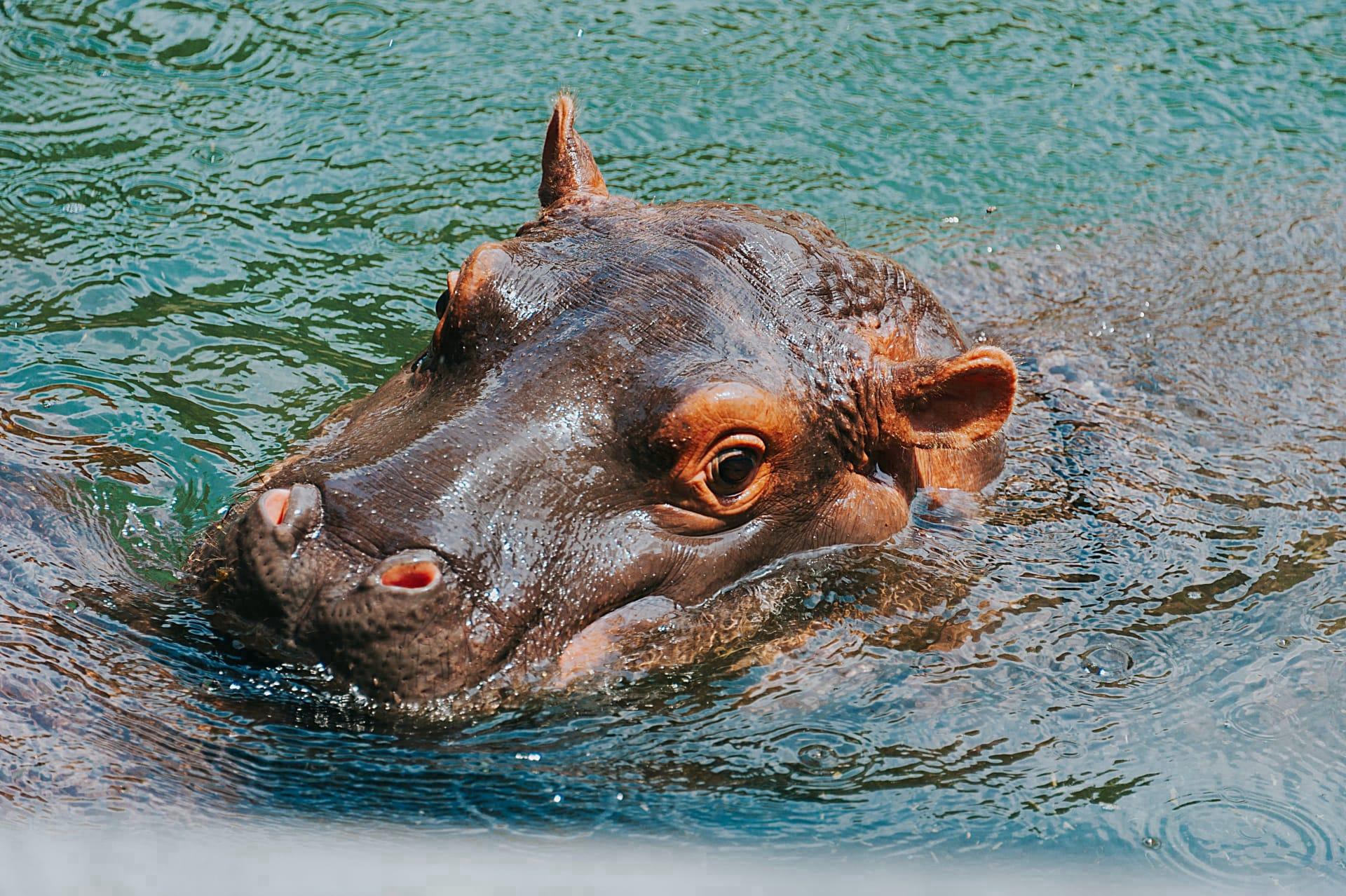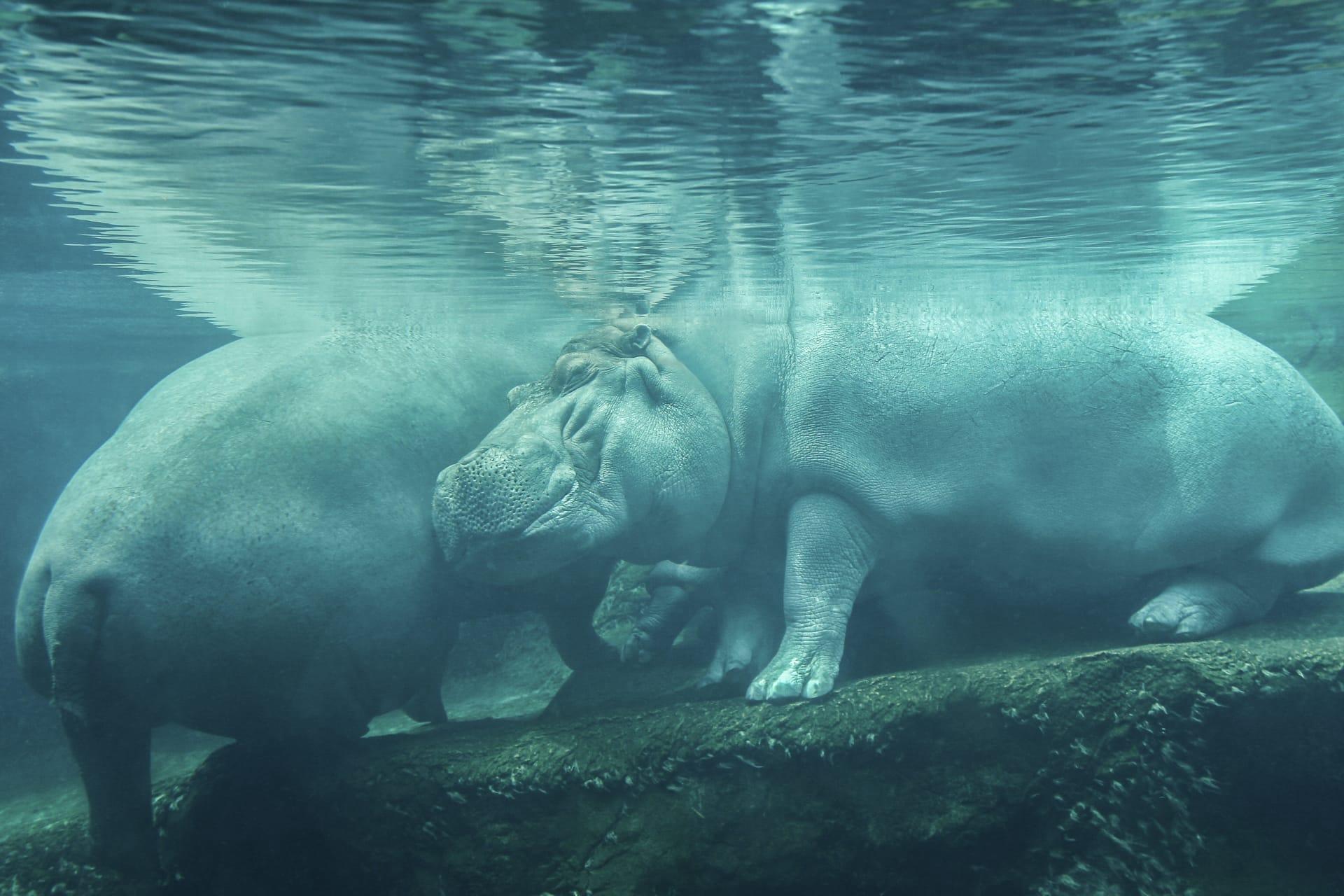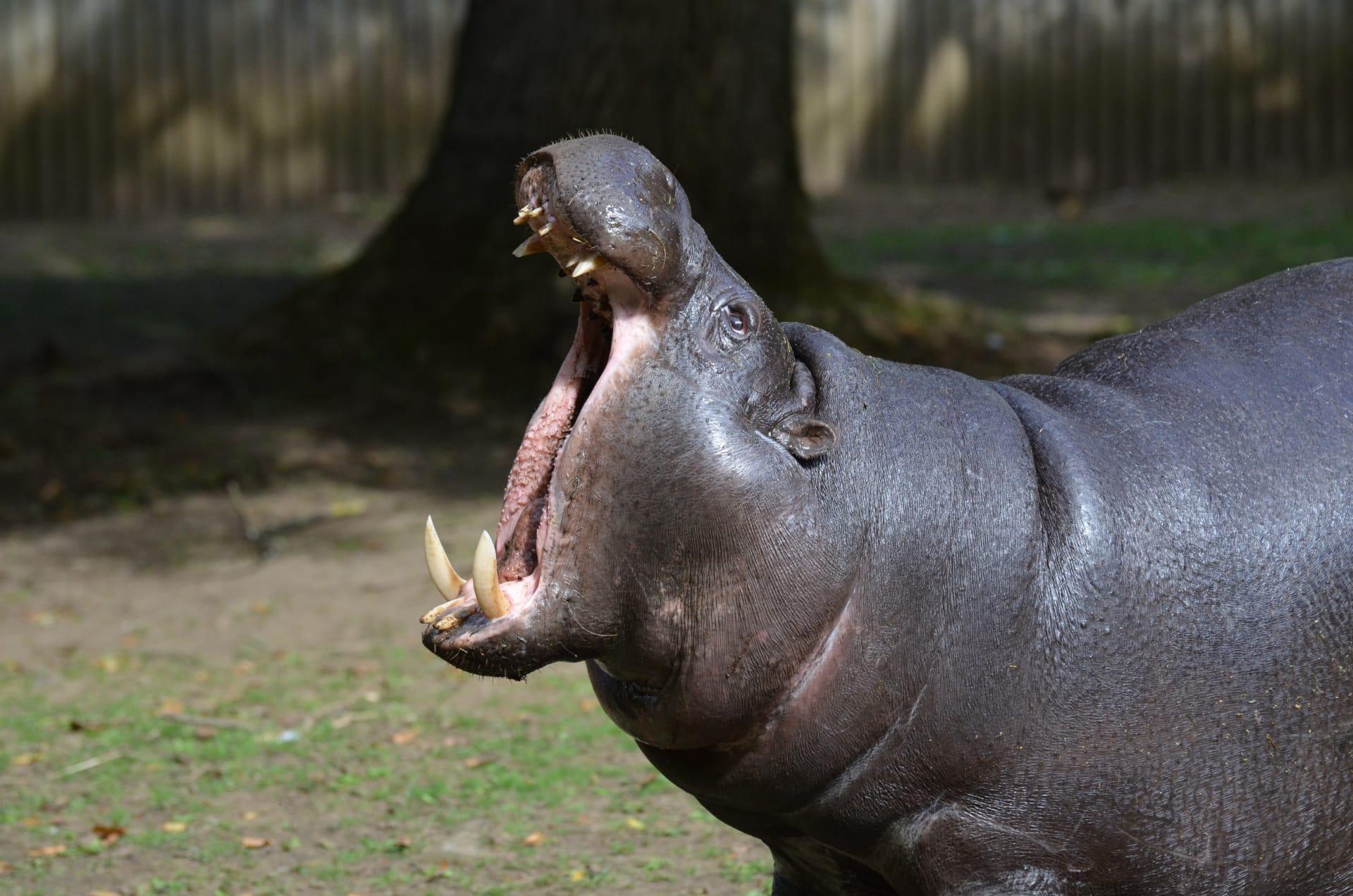Hippopotamus Trivia
- Home /
- Trivia Question /
- Animal /
- Hippopotamus Trivia
1
Question: How big can a hippopotamus get, and what's unique about their size?
Answer: Hippos are among the heaviest land animals, with adult males weighing around 1,500 to 1,800 kilograms and females averaging 1,300 kilograms. Unique to their size is their dense, barrel-shaped bodies, which make them the third-largest living land mammal, after elephants and white rhinos. Despite their bulk, they can run at speeds of up to 30 kilometers per hour on land, a surprising fact given their massive size.
Question: What's the secret behind a hippo's ability to stay underwater for long periods?
Answer: Hippos can hold their breath underwater for up to five minutes. They have a physiological adaptation where their metabolism slows down, and the heart rate decreases to conserve oxygen. Their nostrils and ears close to prevent water entry. Remarkably, they don't swim but rather walk or glide along the riverbed, a unique adaptation for an animal of their size.

2
Question: Is it true that hippos sweat blood?
Answer: No, hippos don't sweat blood. What's often mistaken for blood is a natural sunscreen secreted by their skin, known as "blood sweat" or "hippo red." This secretion is reddish in color and provides protection against UV rays and acts as an antibiotic. The fluid is made up of two acids that absorb ultraviolet light and inhibit the growth of bacteria.
Question: Do hippos eat meat, and how does their diet impact their behavior?
Answer: Contrary to some myths, hippos are primarily herbivores. They feed on grasses, consuming about 35 kilograms nightly. Meat-eating in hippos is extremely rare and usually a sign of nutritional stress or sickness. Their large size and aggressive nature are not due to carnivorous tendencies but rather a territorial defense mechanism and competition for resources.

3
Question: How do hippos communicate, and what's unique about their vocalization?
Answer: Hippos are vocal animals, using a variety of sounds like grunts, wheezes, and deep bellowing roars. The most notable is their "wheeze-honk," a territorial call that can be heard up to several kilometers away. These vocalizations are used to establish dominance, attract mates, and communicate within groups. They even communicate underwater using low-frequency sounds that can travel long distances.
Question: What role do hippos play in their ecosystem?
Answer: Hippos play a crucial role in their ecosystem. They act as ecosystem engineers by creating and maintaining pathways in water bodies, which help other animals and water flow. Their large dung deposits in water bodies provide essential nutrients for fish and aquatic life. This nutrient cycling is vital for the health of aquatic ecosystems, illustrating their significance beyond just being large river-dwellers.

4
Question: Are hippos good swimmers, and how do they move in water?
Answer: Despite their size, hippos aren't actually good swimmers. They can't float or swim in the traditional sense. Instead, they propel themselves by pushing off the bottom or walking along the riverbed. This unique method allows them to move efficiently in water despite their weight. They can also sink and walk underwater, often seen moving gracefully along the river floor.
Question: What is the lifespan of a hippopotamus in the wild and in captivity?
Answer: In the wild, hippos typically live for about 40 to 50 years. However, in captivity, with proper care and absence of predators, they can live longer, often reaching up to 50 to 60 years. The oldest recorded hippo in captivity lived to be 61 years old. Factors affecting their lifespan include environmental conditions, predation, and health issues like diseases and injuries.

5
Question: How do hippos regulate their body temperature, and why is water essential for them?
Answer: Hippos regulate their body temperature by spending most of their time in water. Water acts as a natural coolant, essential for these large animals to avoid overheating. Their skin secretes a natural sunscreen that helps protect them from sunburn while they're in water. On land, they are more vulnerable to overheating due to their large size and limited sweat glands.
Question: What are the social structures of hippo groups, and how do they interact?
Answer: Hippos are social animals, living in groups called pods, schools, or bloats, typically consisting of 10 to 30 individuals. A dominant male leads the group, with females and their young forming the majority. They are territorial in water but more tolerant on land. Social interactions include vocal and physical displays, with dominance and hierarchy being central to their group dynamics. These social structures are vital for protection, mating, and raising young.